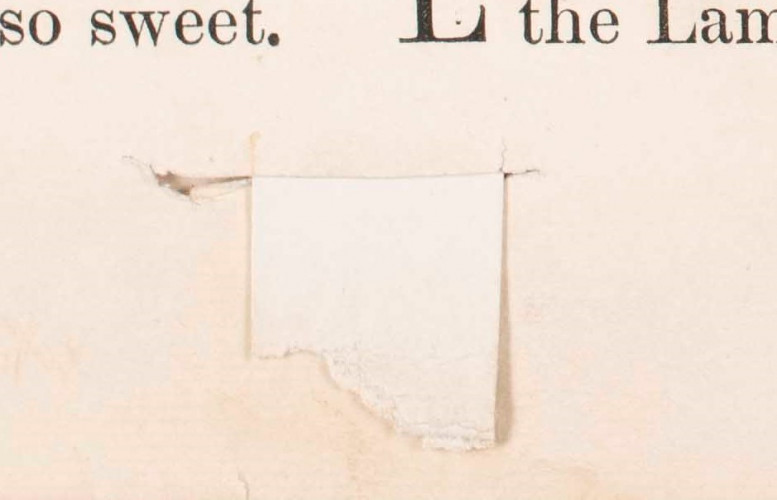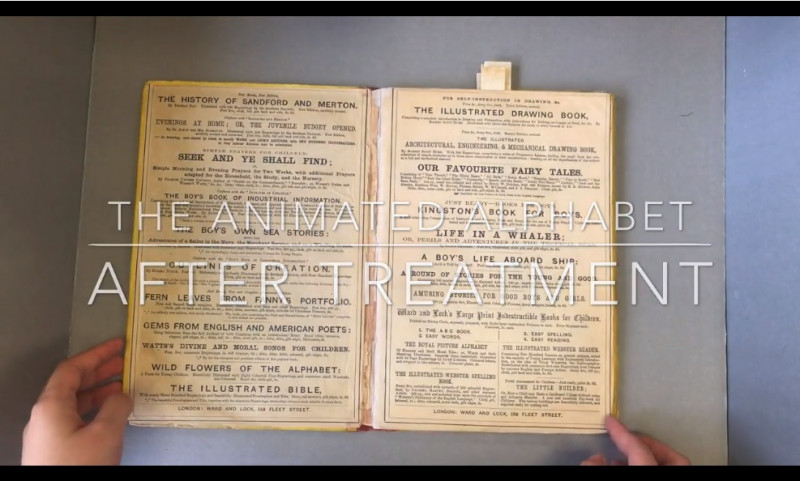Guest post by Shaoyi Qian, summer 2021 Cathleen A. Baker Fellow in the U-M Library conservation lab and current Andrew W. Mellon Fellow in Library & Archive Conservation, Institute of Fine Arts, New York University.
When you think of a book moving, you probably think about opening the covers and turning the pages. However, in the case of pop-up and movable books, there are all sorts of dynamic ways a book can move.
While books with moving elements can be traced back to the 13th century, pop-up and movable books created for children became a viable commercial enterprise in the 19th century. The William A. Gosling Pop-up and Movable Book Collection at University of Michigan Library is part of the Children's Literature Collection in the Special Collections Research Center. William A. Gosling (University Librarian, 1997-2005) began donating his personal collection of pop-up and movable books in the early 1990s. He continued to add to the collection over the next three decades, and served as curator of the Children's Literature Collection in Special Collections from 2005-2008. The collection now stands as an impressive resource for pop-up and movable books dating from the nineteenth century through present day.
As the Cathleen A. Baker Fellow in Conservation at U-M Library Conservation Lab this summer, I had the opportunity to treat three books from this vast collection. They are The Animated Alphabet: Pretty Picture Letters, Das Zauberboot and Blinky Bill: Magic-Action Book. I will describe the interesting repairs I undertook to make these books move properly again in a series of three blog posts, with videos showing the drastic differences before and after treatment.

The Animated Alphabet: Pretty Picture Letters (London: Ward & Lock, 1860), inside, before treatment
In this first post, I will talk about the treatment of a 19th century movable book, The Animated Alphabet, which is the rarest among the three books that I treated this summer. It is a children’s alphabet book illustrated with hand-colored wood engravings.
This book contains what are known as “dissolving views.” One illustrated letter dissolves into the next letter when the pull-strip is pulled. For example, the letter “A” becomes the letter “B”. Years of pulling and pushing the paper strips back and forth caused many of them to become worn and damaged.

The Animated Alphabet in action before treatment
(click here to play video)
Disbinding the book and removing the pull-strips revealed that the dissolving views use a tab-and-slat system. For each dissolving view, there are two sets of images: one printed on the book page and the other printed on two slats. The slats are adhered to the pull-strip (“tab”). The tab and its slats are then laced through the horizontal slits cut in the page.

Verso of the mechanism (above) and individual pull-strip (below)

I first removed the old tapes used to mend the torn slits. I compensated for the losses and damage on the ends of the pull-strips by attaching paper inserts that matched the look and feel of the original paper. I then laced the pull-strips back into place and mended the torn slits.

Before (above) and after (below) the paper insert filled the loss in the pull-strip

I then re-sewed the textblock and re-attached it to the covers. Now all the dissolving views in the book function smoothly and can be handled safely.

The Animated Alphabet in action after treatment
(click here to play video)
In my next blog post, I will talk about the conservation treatment of another movable book, an early 20th century German book, so stay tuned!